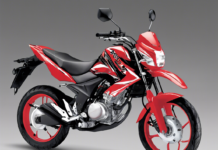The military has always been at the forefront of technological advancements, with innovations that have not only reshaped the battlefield but also revolutionized civilian life. From unmanned drones to advanced communication systems, the army’s cutting-edge innovations have paved the way for a safer and more efficient defense strategy. In this article, we will explore some of the most recent advancements in military technology, highlighting how these innovations are shaping the future of warfare and security.
Unmanned Aerial Vehicles (UAVs)
Unmanned Aerial Vehicles, commonly known as drones, have become a staple in modern military operations. These aircraft can be remotely piloted or operate autonomously, providing real-time reconnaissance, surveillance, and even targeted strikes in hostile environments. UAVs have significantly enhanced the army’s situational awareness and battlefield capabilities, allowing for more precise and effective missions while reducing the risk to human personnel.
Artificial Intelligence (AI) in Warfare
Artificial Intelligence is increasingly being integrated into military systems to enhance decision-making processes, analyze vast amounts of data, and automate various tasks. AI algorithms can quickly process information gathered from sensors, satellites, and other sources to provide commanders with invaluable insights for mission planning and execution. AI-powered systems can also improve the efficiency of logistics, cybersecurity, and even personnel management within the army.
Cyber Warfare Capabilities
In the digital age, cyber warfare has become a critical component of modern military operations. The army’s cyber capabilities include offensive and defensive measures to protect networks, disrupt enemy communications, and conduct information operations. Cyber warfare presents new challenges and opportunities for the army, requiring constant adaptation and innovation to stay ahead in an increasingly complex and interconnected world.
Next-Generation Communication Systems
Reliable and secure communication is essential for military operations, and the army is continually developing next-generation communication systems to ensure connectivity in any environment. These systems incorporate advanced encryption methods, satellite technology, and resilient networks to maintain communication superiority on the battlefield. Enhanced communication capabilities allow for better coordination among units, faster response times, and improved overall situational awareness.
Directed Energy Weapons
Directed Energy Weapons, such as high-energy lasers and microwave emitters, represent the future of precision firepower on the battlefield. These weapons have the potential to engage targets with unparalleled speed and accuracy, offering a cost-effective and versatile alternative to traditional munitions. The army is exploring the use of directed energy weapons for air defense, counter-drone operations, and other mission-critical scenarios to maintain a strategic advantage over adversaries.
Enhanced Personal Protective Equipment
The safety and well-being of soldiers are top priorities for the army, leading to the development of enhanced personal protective equipment (PPE). Advanced materials, ergonomic design, and integrated sensors are transforming traditional gear into smart and adaptive systems that offer better protection, comfort, and performance in the field. From lightweight body armor to helmet-mounted displays, these innovations improve soldier survivability and effectiveness in combat situations.
Autonomous Ground Vehicles
Autonomous ground vehicles, including unmanned ground vehicles (UGVs) and autonomous convoys, are changing the way the army conducts logistics, reconnaissance, and even combat missions. These vehicles can navigate complex terrain, transport supplies, and assist troops without direct human intervention, reducing the risk to personnel and increasing operational efficiency. The army’s investment in autonomous technology is driving innovation in robotics, artificial intelligence, and sensor integration for a wide range of applications.
Frequently Asked Questions (FAQs)
Q: How do UAVs benefit military operations?
A: UAVs provide real-time surveillance, reconnaissance, and targeted strike capabilities without risking human lives. They enhance situational awareness and operational effectiveness on the battlefield.
Q: What role does artificial intelligence play in warfare?
A: Artificial intelligence aids in data analysis, decision-making, and task automation, improving mission planning, logistics, and cybersecurity efforts in military operations.
Q: How does the army use cyber warfare capabilities?
A: The army employs cyber warfare for offensive and defensive purposes, including network protection, information operations, and disrupting enemy communications.
Q: Why are next-generation communication systems essential for the military?
A: Next-generation communication systems ensure reliable, secure, and fast communication among military units in diverse and challenging environments, enhancing operational effectiveness.
Q: What are directed energy weapons, and how do they benefit the army?
A: Directed energy weapons use high-energy beams for precise and rapid target engagement, offering a cost-effective and versatile solution for various mission scenarios, such as air defense and counter-drone operations.
In conclusion, the army’s cutting-edge innovations represent a convergence of technology, tactics, and strategy to meet the evolving challenges of modern warfare. By leveraging advancements in UAVs, artificial intelligence, cyber warfare, communication systems, directed energy weapons, personal protective equipment, and autonomous ground vehicles, the army is at the forefront of military innovation. These advancements not only enhance the army’s capabilities but also underscore the commitment to safeguarding national security and ensuring mission success in an increasingly complex and unpredictable world.









